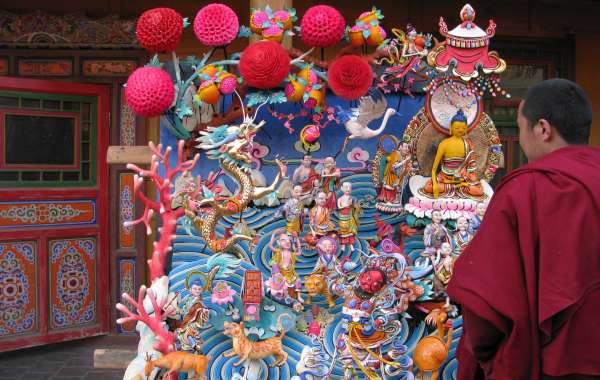According to history, a unique calendar that is used to calculate the day, month, and year according to wax and wane of the moon, was created by Tibetan people more than 3,000 years ago. Hundreds of years later, those who believe in Bonpo (the original religion in Tibet) learn to reckon the exact day of Winter Solstice and made it the beginning of a year. This laid the foundation of the variety of festivals in Tibet. In the 7th century, Princess Wen Cheng and Princess Jin Cheng entered Lhasa Tibet for marriage successively and took the Chinese Traditional Calendar to this ancient land. From then on, the Tibetan Calendar had taken advantage of the lunar calendar and the Hindu calendar. It became an individual calendar that contains Heavenly Stems, Earthly Branches, and the five elements in the Yuan Dynasty. After centuries of development, the Tibetan Calendar has become a mature system.
Actually, the Tibetan calendar has been influenced by three systems. One is Sri Kalachakra Tantra (Wheel of Time Tantra), which was spread into Tibet from Sanskrit in 1027 A.D. The second one is the lunar system brought by Princess Wen Cheng of the Tang Dynasty. The last one is the elemental solar system, which defines the new year falls in December. The three systems harmonize solar and lunar factors in the Tibetan calendar.
Tibetan Calendar is a combination of the lunar calendar and solar calendar. The year which consists of 354 days is divided into four seasons according to the calendar. Unlike most other traditions, one year begins with winter and ends in autumn. Twelve months are included in one year and the first month is the same as the Chinese Traditional Calendar. A month includes 30 or 29 days. The former is called the big month while the latter is called the small month. They alternate with each other and an additional one called leap month is added to the calendar to adjust the relationship between months and seasons. According to the Tibetan Calendar, one year is not divided into four equal parts as the time range of each season is based on the locations of the sun in the sky. In general, winter is the longest season, then spring, autumn, and summer. Every 60 years Tibetan Calendar will recount according to the tradition handed down from old times. Besides, the 24 divisions of the solar year could be very useful in predicting the weather of Tibet in the long term, the planetary motion, and the eclipse.
Besides Tibet, Tibetan Calendar is also used by the persons who live in some areas like part of China's western regions and Bhutan. It provides a guide for daily routines like travel, marriage, and funeral because people there believe that almost every daily activity should be done at the right time. Many proverbs that come from the activities of astronomical observations and local legends have been recorded into the calendar. They are easy to remember and spread among the Tibetans.




